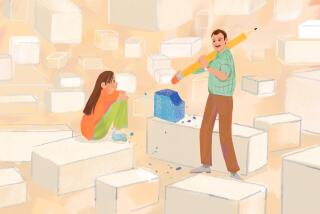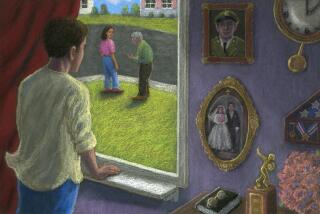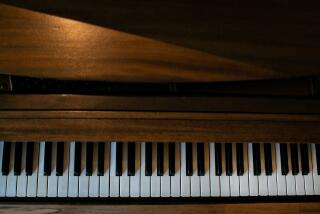Scuba diving with Dad in Curaçao
- Share via
Reporting from Westpunt, Curaçao — We all marveled at the hideous thing, trying not to gasp through our regulators.
It was black, striped and about the size of a bass, fins fanning out in all directions. Scuba divers see a lot of weird-looking things but appreciate them all the same. But our dive masters told us that there were bounties on these lionfish, ugly creatures that destroy reef-cleaning fish populations. No one knows where they came from or how many threaten Curaçao’s marine park.
I had come to this small Caribbean island, 35 miles off Venezuela, in June with my father, Matt, a small-business owner. The last few years had been rough on him, and after a period of reflection, he had made a bucket list, and at the top was becoming a certified scuba diver.
I was already certified, and my dad deserved a break. We were also long overdue for some father-daughter bonding. The trip was as much a chance for me to learn about his new perspective on life as it was for him to learn to dive. But let’s be real — a father-daughter trip involving two stubborn yet adventurous souls equipped with only swimsuits, oxygen tanks and fins could be a dream vacation or a total disaster.
As it turned out, Curaçao is an optimal place for new divers, with dozens of reefs at 60 feet or less, plenty of clear, calm water and a plethora of patient, professional dive masters. The Netherlands Antilles Coral Reef Initiative wants to slowly replace Curaçao’s chief economic engine, an offshore Venezuelan oil refinery, with marine tourism. It hopes that its educational workshops and lobbying for enforcement of laws against dredging and illegal fishing will put the island on the world’s stage for scuba diving.
Dad and I had done a trial run together when he completed his open water dives as part of his scuba diving course. I went along for practice and moral support. We camped with his eclectic classmates, united by a sense of adventure, at a lake in southwestern Virginia. Dad was nervous as he completed an exercise that required him to remove his face mask, put it back on and extract the water from it while anchored in the sand 15 feet below the surface. He finished the course with flying colors. The first hurdle had been mastered.
Our first dive together was at Beacon Point reef, on the southeastern coast of Curaçao, where Dad was flailing about, pointing excitedly at the lionfish. Movement can quickly deplete your oxygen.
When our tanks were about two-thirds empty, we were supposed to alert the dive master so she could lead everyone to the surface. Dad’s oxygen gauge was dangerously low, so we signaled to the dive master. Dad switched his regulator (mouthpiece) with her spare one, often a last resort. At the surface, we received a firm but uncondescending lecture from the dive master about the importance of never letting that happen again. Ever.
I couldn’t help but feel a bit guilty about not keeping a closer eye on my father. For years, he had kept an eye out for me. It was weird. We became extra-cautious now in Curaçao, studying the rough currents of Director’s Bay and the prickly reef at Lost Anchor, where I encountered a moray eel big enough to take off my hand.
Dad became a stickler for rules after his incident. If I drifted away from him but was still visible, he’d gently scold me when we got back on the boat. Once, I led him to see a creature, so we surfaced a little later than the rest of the group. “Are you trying to kill your dad?” he asked. It had been several years since I had moved out of his house, and we still had our quarrels. But I brought him here because we share an insatiable curiosity and fearlessness about trying new things. For the most part, he’d been more relaxed than I’d seen him in a while.
One of Curaçao’s prized dive sites is the Mushroom Forest, off the southwestern side of the island in water up to 65 feet deep. The site is full of vertical coral that have been eroded by the water into mushroom shapes. They burst with shades of violet, green, blue and yellow and sway gracefully with the movement of the currents. We didn’t see many exotic fish or turtles on our dive, but it was one of the most intriguing dive sites we visited.
Afterward, we had lunch at Jaanchie’s, a Creole restaurant that’s a short bike ride or drive from our suite at the Lodge Kurá Hulanda & Beach Club on the western end of the island. Jaanchie himself will tell you to lock up your significant others after eating his iguana stew specialty (it is a legendary aphrodisiac). My dad and I spent the last couple of nights on our back patio, looking at the bright stars and rehashing the day’s events over a bottle of wine.
During a break from diving one day at the Blue Cave, a small swimming hole tucked along the southwestern coast where the Caribbean’s reflection turns the inside sapphire blue, I looked out at the bright sea and paused. This had been one of the most memorable trips I’d ever taken: My dad had learned to scuba dive, and I had learned that his adventurous spirit had not died. For the last few years, Dad, an entrepreneur, had tried to keep his head above water. But all he really needed was a chance to sink.
More to Read
Sign up for The Wild
We’ll help you find the best places to hike, bike and run, as well as the perfect silent spots for meditation and yoga.
You may occasionally receive promotional content from the Los Angeles Times.






